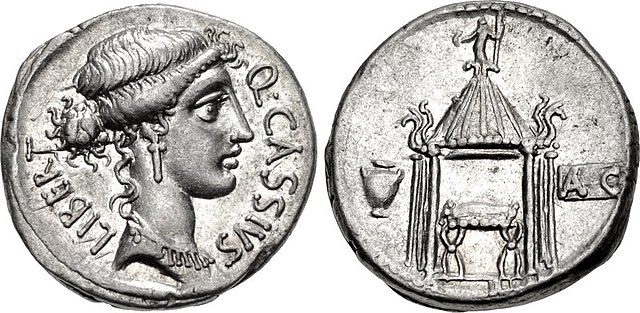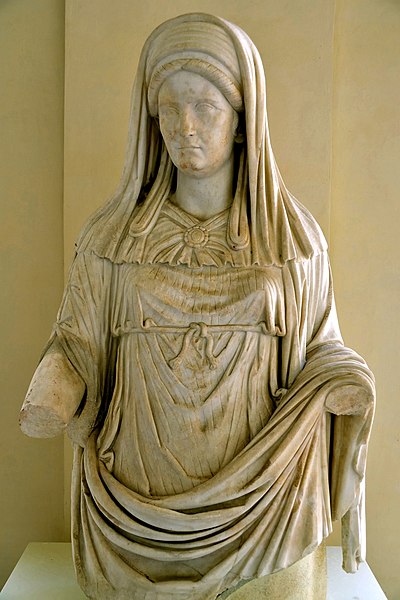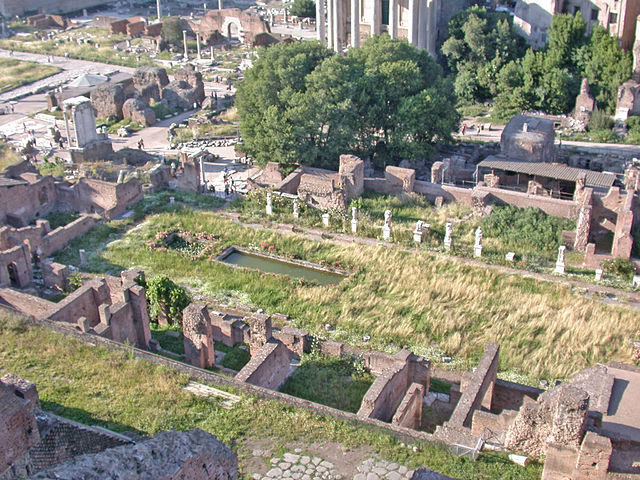Trial of the Vestal Virgins (114–113 BC)
Aemilia, Licinia and Marcia were Roman vestal Virgins, who were prosecuted for having broken the vow of chastity in two famous trials between 115 and 113 BC. The first trial was conducted by the Pontifex Maximus Metellus Delmaticus, who sentenced Aemilia to death in 114 BC. The decision to spare the other two vestals triggered outrage and led to a follow-up trial headed by Cassius Longinus Ravilla. Licinia and Marcia were subsequently put to death as well. The trials were heavily influenced by the political background and network of the participants.
Denarius of Lucius Cassius Longinus, 63 BC. The obverse depicts Vesta. On the reverse, a voter is casting a ballot inscribed V, for uti rogas ("as you propose"). Vesta and the voter are allusions to the election of Longinus Ravilla as prosecutor in the Vestals' case of 113.
Denarius of Quintus Cassius Longinus, 55 BC. Libertas is portrayed on the obverse. The reverse is a depiction of the Temple of Vesta, where Longinus Ravilla held the trial in 113. On the left is a voting urn, and a ballot (tabella) is on the right. It is inscribed A C for Absolvo Condemno ("acquitted" or "condemned"), a further reference to the trial.
In ancient Rome, the Vestal Virgins or Vestals were priestesses of Vesta, virgin goddess of Rome's sacred hearth and its flame.
2nd-century AD Roman statue of a Virgo Vestalis Maxima (National Roman Museum)
House of the Vestals and Temple of Vesta from the Palatine
Relief of the Vestal Virgins at a banquet, found in 1935 near Rome's Via del Corso (Museum of the Ara Pacis)
The most prominent feature of the ruins that were once the Temple of Vesta is the hearth (seen here in the foreground).






